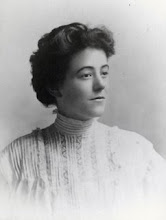
We’re back to winter in the old Midwest. January was like March. My parsley was still green, my volunteer bachelor’s buttons were healthy looking, cabbage plantlings I’d put in and forgotten about were still alive. Without any snow cover, if the temperature had been normal, they’d have been iced. Snow is a wonderful insulator, and I believe the soil is still moisture deficient, although there was quite a lot of rain in November.
It’s blustery outside and the type of winter evening seed catalog merchants count on to boost sales. Even though I am likely to be a transient once again this summer, I am damned well going to have some plants – somewhere. I love seed catalogs. Select Seeds in Union, Connecticut for heirloom flowers, Cook’s Garden Seeds, Johnny’s Selected Seeds in Albion, Maine and Seeds of Change in New Mexico fro vegetables are my favorites. Shepherd’s used to have wonderful seeds, as well, but I believe they were acquired by the White Flower Farm and then deep-sixed. They never disappointed me. Burpee’s is always reliable, too.
If I had my way, I’d turn my front yard, if possible, into a space to grow edible crops, as well as the back. At the very least native plants would take the place of some of the turf grass. I’d leave some dandelions, although I have a dandy tool with which to dig them out. The bees need the early pollen, starting with crocuses. When they’re spent, there can be a lag before the really good stuff blooms.
For several years I have dreamed of buying some land for a market garden. A handy water source and excellent soil fertility, sun (natch) are all I ask. Farm land around here runs around $5000. per acre. Agriland that’s been Dowed and Monsantoed is easy to come by, but I want land that hasn’t been wrecked by chemicals. My late uncle’s assisted living facility was built on an old orchard. Last June I walked around the property and found German Chamomile growing everywhere. Those old fashioned farmers knew what they were doing. There isn’t much of anything that German chamomile won’t help, because it attracts beneficial insects. I’m sure the farmer sprayed the trees, but the soil might not be as compromised.
Incorporated areas nearly always have restrictions on the type of dwelling one can situate on his land. Consequently I may have to go away from civilization and into fundie/survivalist country. They might appreciate someone like me. Who knows? What’s the name of that book? Oh, yes. Jesus Land. Well, that was Indiana. World of difference between Michigan and Indiana. (apologies to any I may have offended. Indiana is beautiful and the birthplace of Abraham Lincoln. I’ve been there.)
For the immediate future I may stick to hybrid tomatoes. The heirlooms need excellent soil conditions, and some don’t yield nearly as well as the hybrids. The last two years I grew a rare heirloom, red calabash, which I bought from Seeds of Change. It is prolific, but small, about twice the size of a good size cherry tomato, but does not hold too awfully long on the vine. My purple Cherokee did nothing last year, but I think the soil is the reason. Marmande, a 6 ounce heirloom, was also good.
Among the F1 hybrids, Juliet is a definite winner – prolific and good tasting. I ate dozens right off the vine. Nothing like a sun-warmed tomato. It is a plum variety.
The best all-around hybrid for my neck of the woods is Better Boy (Burpee). It is great for canning, eating, has a good shelf life and is very tasty.
A neighbor wants me to find him some certified Rutgers seed. Rutgers is a parent of the tomato Cambell’s soup uses. My brother always grows them. If I had a large enough space I could experiment.
There is something wonderful about being able to grow some of one’s own food. Work never runs out, but the effort is worth it, especially if you can preserve something for winter. Home canned tomatoes over pasta with a little Parmesan cheese is a divine concoction. My parents used to give me home canned tomatoes for Christmas. As good as a bottle of Champagne – better – and I am a Champagne girl.
There was an organic herb farm for sale around here a few years back. It was one of my favorite businesses in these parts, and they even had a little lunchtime restaurant. The proprietors’ children didn’t want to carry on the business, so they had it on the market for about $550,000. They worked seven days a week about 10 months a year, but it was spectacular. Heaven.
Well, I am bookmarking sources. Michigan has a land use institute. The cooperative extensions also can be good resources. I have one of Eliot Coleman’s books. Who knows. One of my ancestors – a great great grandmother, I believe - walked to market a couple of miles each way when she was in her ‘80s. Many such lived to be 100. My heart is in the city, but owning land is a big deal to me. Irish. Wasn’t that what Scarlett’s father told her?

No comments:
Post a Comment